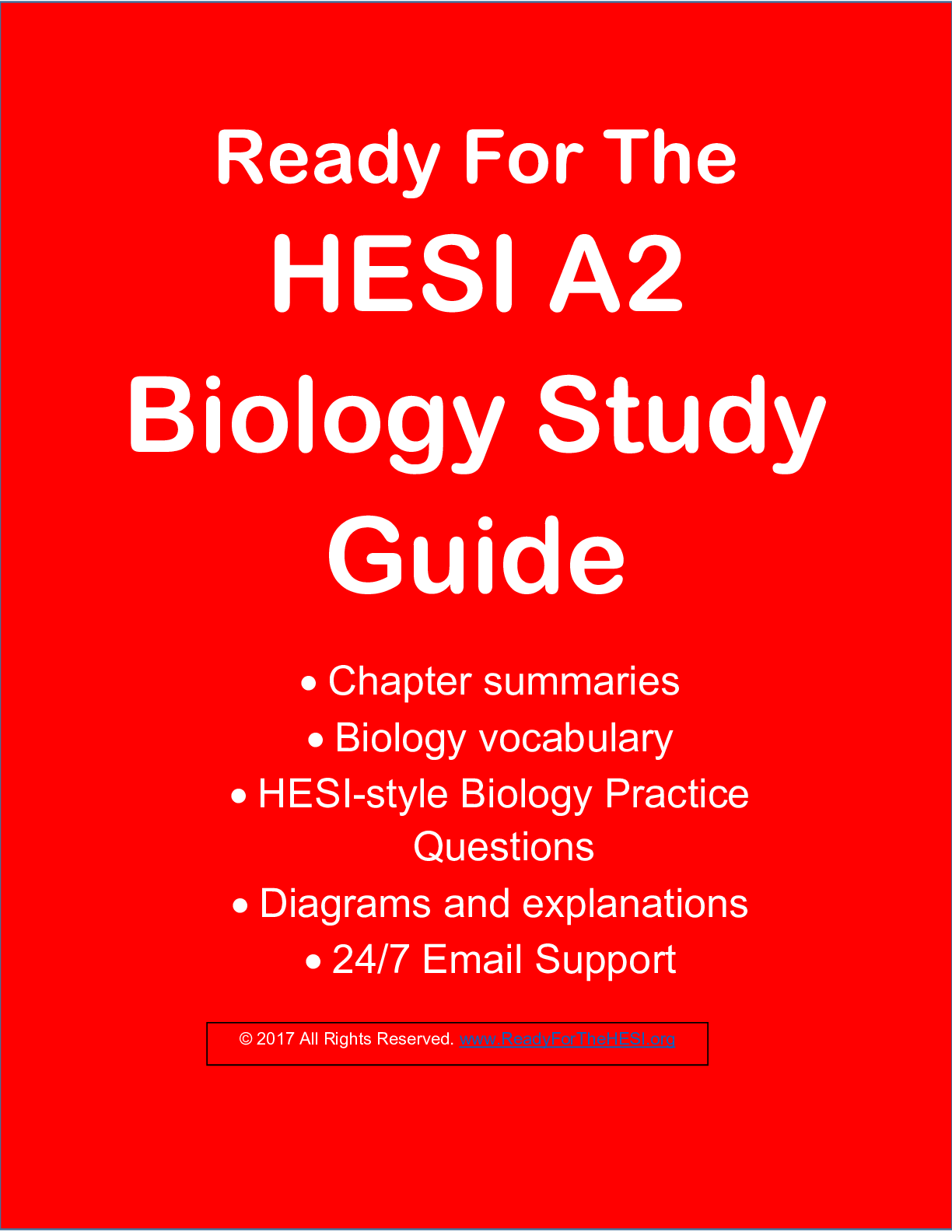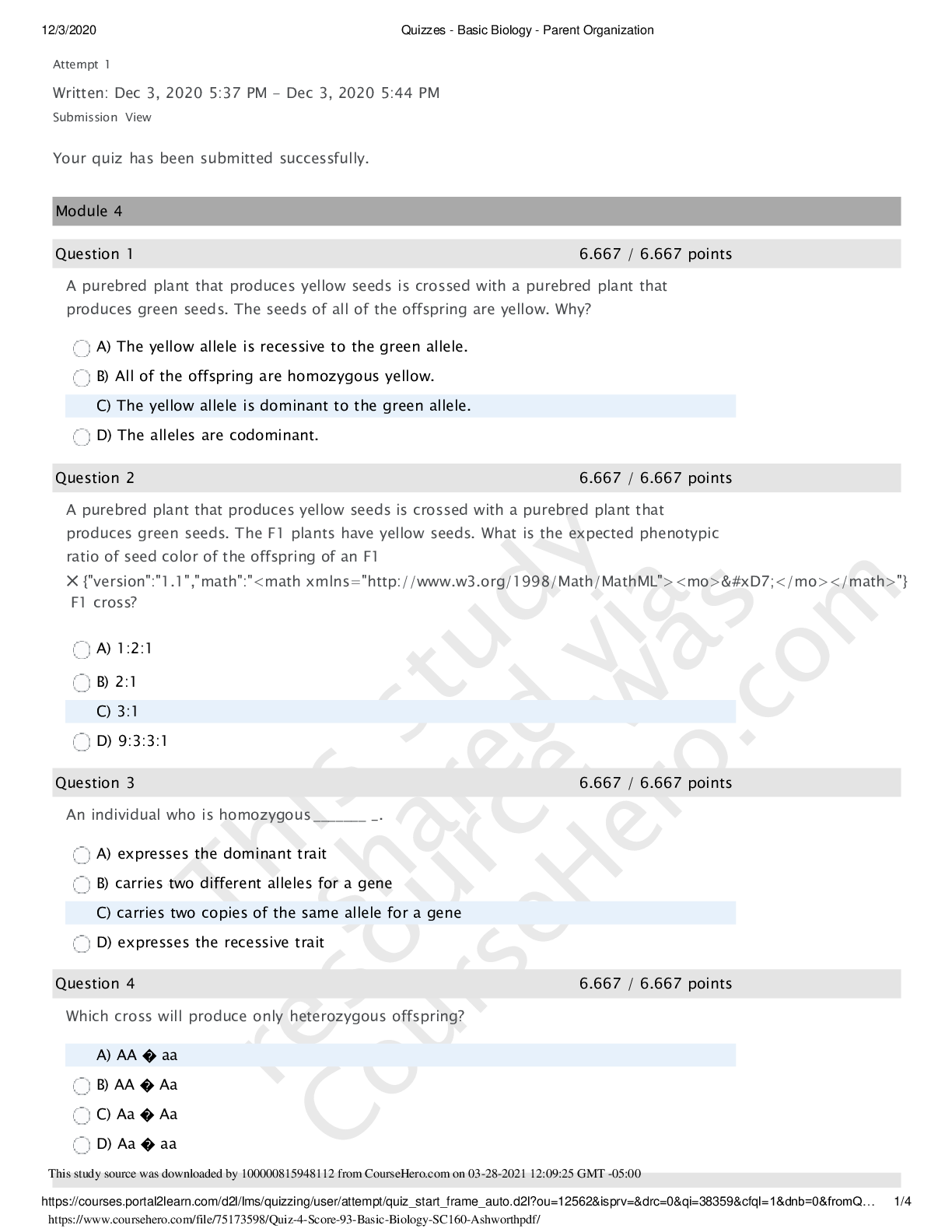HESI A2 Biology Study Guide 2022 Mt San Antonio College NRSG 101 .
Document Content and Description Below
HESI A2 Biology Study Guide Cellular respiration Cellular respiration is the process inside of cells that converts nutrients (such as sugars, amino acids, and fatty acids) into ATP (adenosine triph... osphate), which is used throughout the organism for energy. Large molecules are broken into smaller molecules, which releases both energy and waste. Aerobic respiration occurs in the presence of Oxygen and has four main stages: • Glycolysis: Larger sugar molecule is broken down into 2 smaller sugar molecules in the cytoplasm. Net gain of 2 ATP and 2 NADH • Formation of Acetyl CoA: Pyruvate undergoes oxidative decarboxylation to form Acetyl coenzyme A. 1 CO2 is released as waste. Net gain of 2 NADH. • Citric acid cycle: also known as Krebs cycle. The 2 small sugar molecules produced during glycolysis are oxidized forming new products. Gain of 2 ATP, 6 NADH, 2 FADH2. • Electron transport chain: redox reaction involving the electrons removed during glycolysis and the Krebs cycle. Protons are pumped across the mitochondrial membrane to form a gradient, which drives the synthesis of 34 ATP. Anaerobic respiration is a type of cellular respiration which occurs when oxygen is not present. This process is most commonly performed by bacteria and Achaea. These organisms use this process to obtain energy because they live in environments with low oxygen levels. Example: Achaea called methanogens use carbon dioxide to accept electrons. Methanogens can be found in soil and the digestive systems of animals called ruminants, which includes cows and sheep. Anaerobic respiration, similar to aerobic cellular respiration, uses electrons from the fuel molecules to pass through the electron transport chain, which drives ATP synthesis. The electron transport chain moves electrons to create a proton gradient that allows for the synthesis of ATP. Electron transport chains are used for extracting energy. This can happen in plants, where the energy from the sunlight is used to create glucose and oxygen through photosynthesis in the chloroplast. Eukaryotes perform this process in the mitochondria. Fermentation is another type of cellular respiration which occurs in the absence of Oxygen. Organisms capable of fermentation include prokaryotes, yeast, and multicellular organisms such as humans. [Show More]
Last updated: 1 year ago
Preview 1 out of 48 pages
Instant download

Buy this document to get the full access instantly
Instant Download Access after purchase
Add to cartInstant download
Reviews( 0 )
Document information
Connected school, study & course
About the document
Uploaded On
Apr 19, 2022
Number of pages
48
Written in
Additional information
This document has been written for:
Uploaded
Apr 19, 2022
Downloads
0
Views
38











